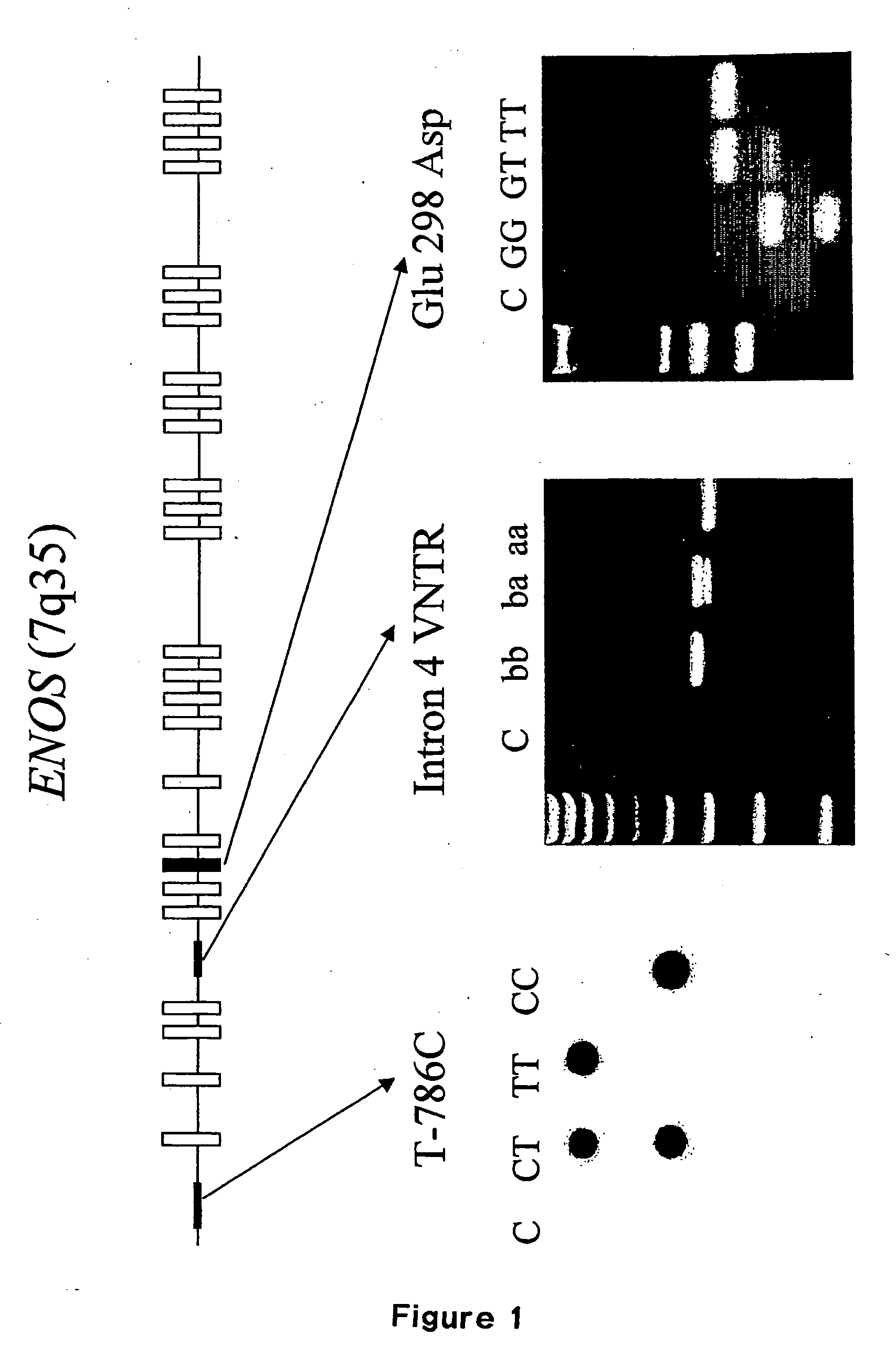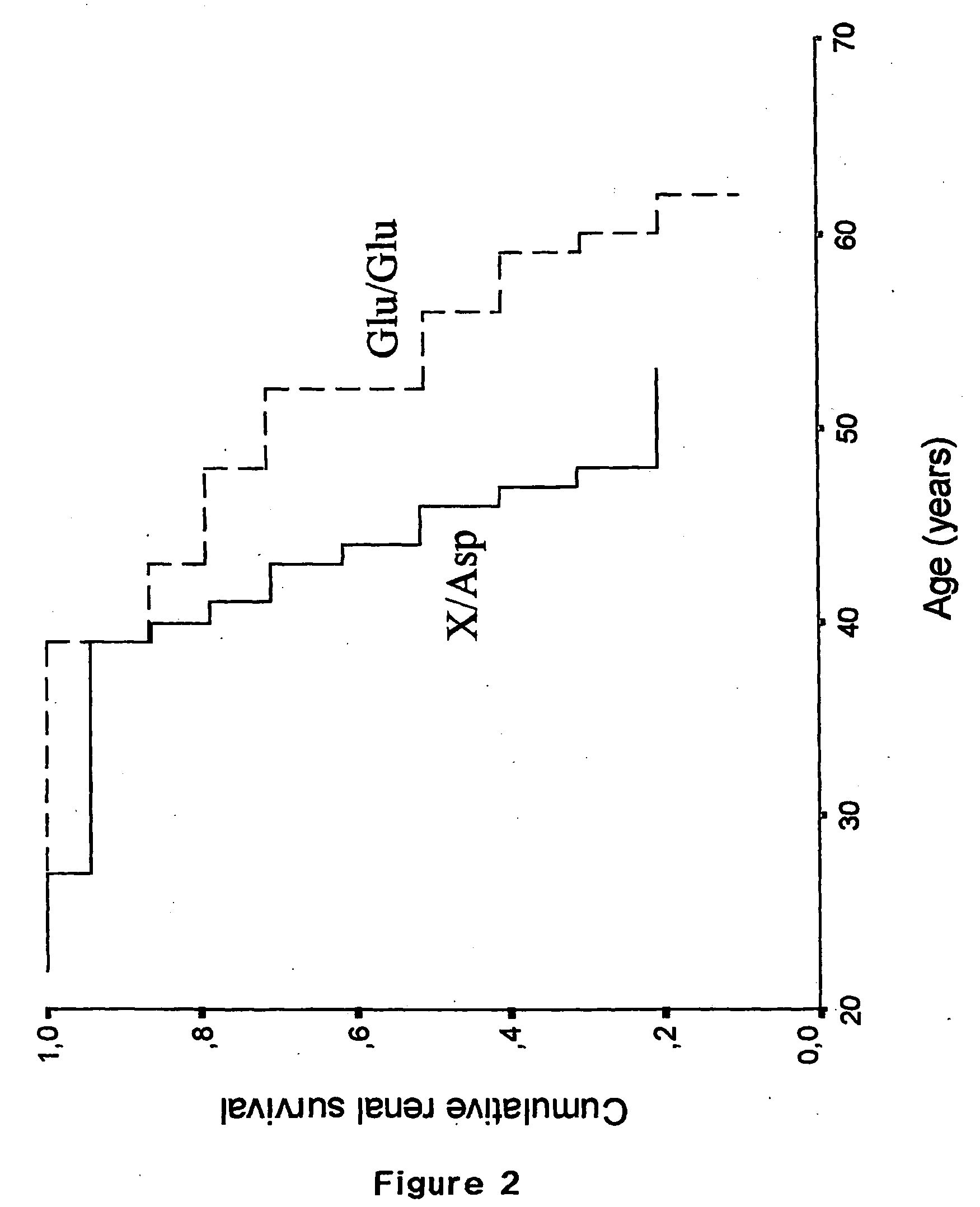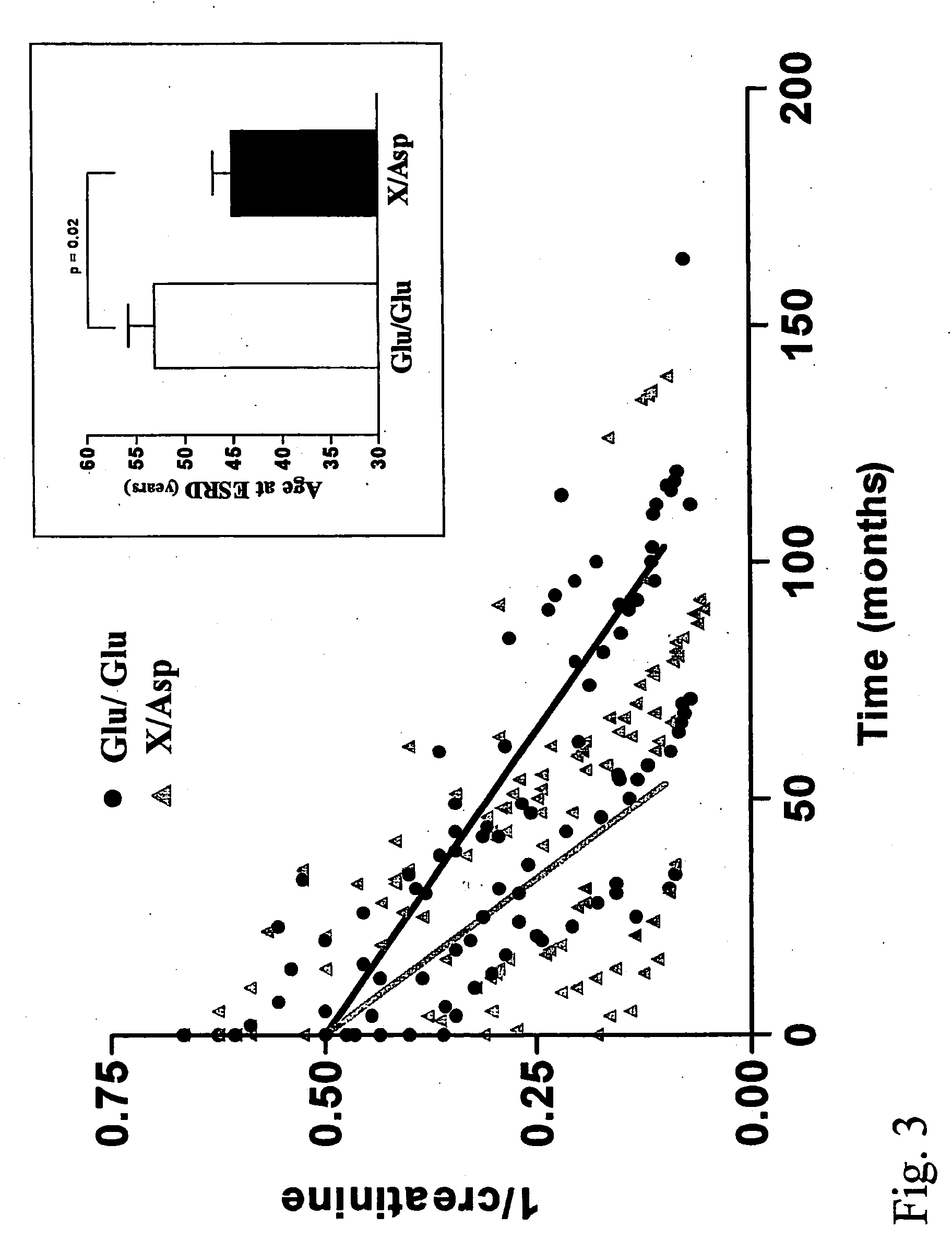Method for diagnosing and treating predisposition for accelerated autosomal dominant polycystic kidney disease
a technology of autosomal dominant polycystic kidney disease and predisposition, which is applied in the direction of microorganism testing/measurement, sugar derivatives, biochemistry apparatus and processes, etc., can solve the problems of renal failure, slow growth of cysts, renal failure,
- Summary
- Abstract
- Description
- Claims
- Application Information
AI Technical Summary
Benefits of technology
Problems solved by technology
Method used
Image
Examples
example 1 and 2
relate to the distribution of different polymorphisms of the ENOS gene in a population.
Example 3 provides evidence that the Glu 298 Asp polymorphism of the ENOS gene is related to ADPKD, and influences the progression of the disease and the age at ESRD.
examples 4 and 5
show that the Glu 298 Asp polymorphism is associated with a faster renal decline in ADPKD male patients.
Example 6 provides evidence that a decrease in NOS activity in association with post-translational modification and a partial cleavage of eNOS form the molecular mechanisms underlying the influence of the Glu 298 Asp polymorphism.
example 1
Characteristics of the ADPKD Population Studied and Distribution of ENOS Polymorphisms in the Population
Patients at ESRD were recruited from September 1998 to September 2000 in Saint-Luc Academic Hospital, Brussels (Belgium); U.Z. Gasthuisberg, Leuven (Belgium); and Necker Hospital, Paris (France). All Caucasian patients affected with ADPKD on renal replacement therapy, i.e. dialysis or renal transplantation, in the 3 centers during the recruitment period were included. The diagnosis of ADPKD was established on the basis of bilateral enlarged cystic kidneys and a family history suggestive of autosomal dominant inheritance. The age at ESRD was defined as the age at starting renal replacement therapy (creatinine clearance 10 ml / min). All patients recruited in this first phase were unrelated. A detailed follow-up for at last 2 years before ESRD was available for all patients included. A total of 182 unrelated patients at ESRD were recruited. From 57 potentially informative families, ...
PUM
| Property | Measurement | Unit |
|---|---|---|
| concentration | aaaaa | aaaaa |
| systemic blood pressure | aaaaa | aaaaa |
| restriction fragment length polymorphism | aaaaa | aaaaa |
Abstract
Description
Claims
Application Information
 Login to View More
Login to View More - R&D
- Intellectual Property
- Life Sciences
- Materials
- Tech Scout
- Unparalleled Data Quality
- Higher Quality Content
- 60% Fewer Hallucinations
Browse by: Latest US Patents, China's latest patents, Technical Efficacy Thesaurus, Application Domain, Technology Topic, Popular Technical Reports.
© 2025 PatSnap. All rights reserved.Legal|Privacy policy|Modern Slavery Act Transparency Statement|Sitemap|About US| Contact US: help@patsnap.com



